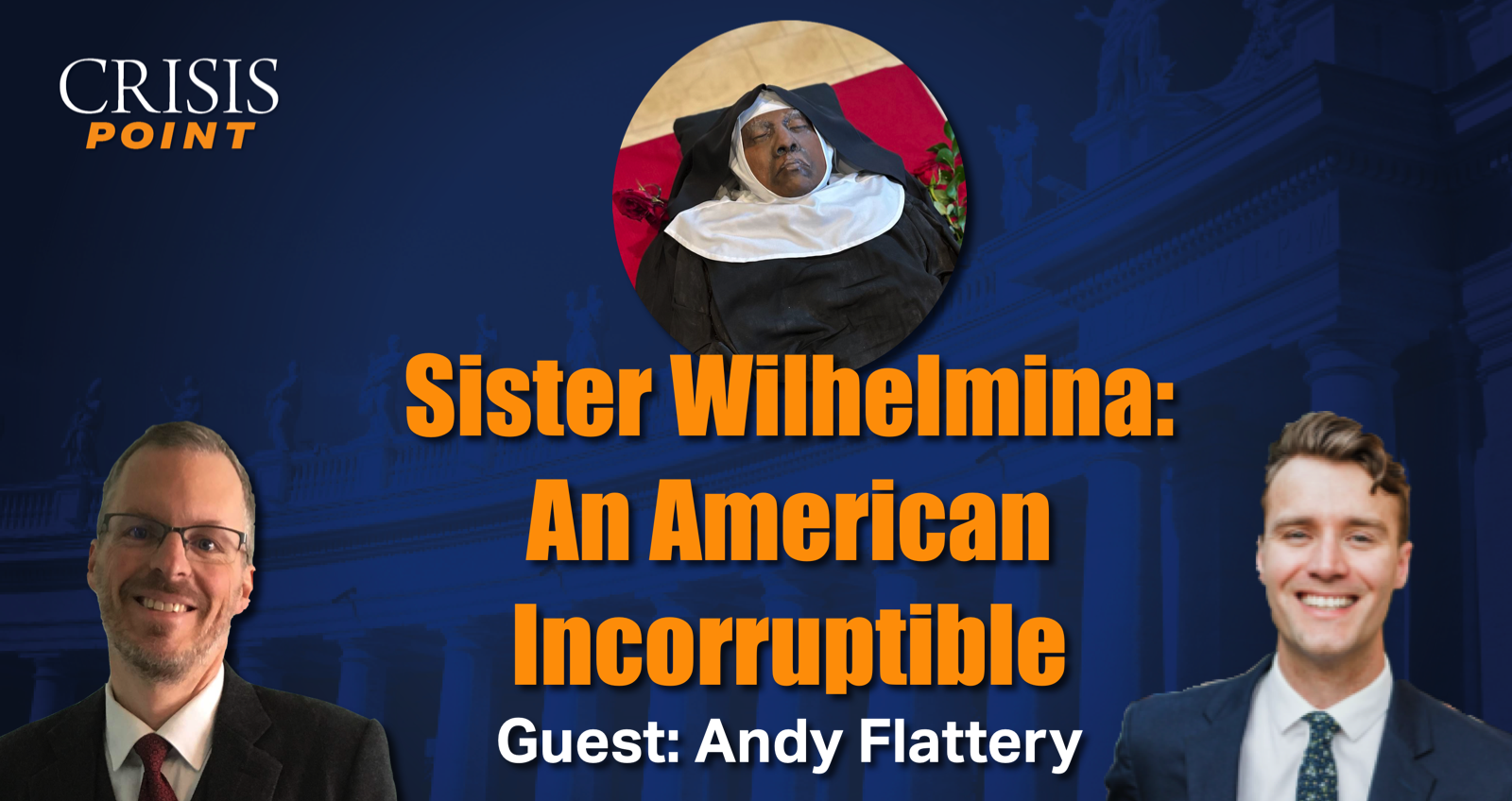|
Getting your Trinity Audio player ready...
|
The biggest story among American Catholics this year is surely the incorrupt body of Sr. Wilhelmina Lancaster, foundress of the Benedictines of Mary Queen of Apostles. Thousands have flocked to venerate her body, and many, including me, are declaring it a miracle and Sister Wilhelmina a saint.
But some well-meaning Catholics are saying slow down: Shouldn’t Catholics wait for the Church’s official decision before believing Sister Wilhelmina’s body was kept miraculously incorrupt or that she is a saint?
Well, yes and no.
Orthodox. Faithful. Free.
Sign up to get Crisis articles delivered to your inbox daily
Ultimately, it is the Church which has the final authority to make both determinations—if a miracle occurred and if she is a saint. Neither process has even begun. The local diocese of Kansas City-St. Joseph has issued a reasonable statement on the process, noting that “Bishop [James] Johnston is working to establish a thorough process for understanding the nature of the condition of Sister Wilhelmina’s remains.” It continues, “Bishop Johnston invites all the Faithful to continue praying during this time of investigation for God’s will in the lives of the Benedictines of Mary, Queen of Apostles; for all women religious; and all the baptized in our common vocation to holiness, with hope and trust in the Lord.”
Bishop Johnston is entirely correct to not accept at face value the claims of the miraculous and to note a process must be followed to determine the nature of what happened to Sr. Wilhelmina’s body. Miracles are alleged all the time, and Catholics should not be so incredulous to believe every claim as legitimate. A bishop has a duty to protect his flock from charlatans and scammers, and so he absolutely should be cautious before proclaiming anything publicly.
Further, the Benedictine sisters also issued a balanced statement in which they express their support and respect for following the proper process. They state, “While we can attest to Sister’s personal sanctity, we know that incorruptibility is not among the official signs taken by the Church as a miracle for sainthood, and that all things must be subjected to further scrutiny, especially by the competent authorities in the medical field. The life itself and favors received must be established as proof of holiness.” Their acceptance of following the proper process is entirely appropriate and demonstrates their great faith.
Related Podcast:
However, respecting the need for a formal process does not mean that the faithful cannot believe, right now, that a miracle occurred, or that Sr. Wilhelmina is a saint. We don’t have to wait for the official process to be completed before personally accepting divine action in this regard.
In fact, this is how these things typically have worked in the past. When a miraculous event occurs, it is the faithful who accept and proclaim divine intervention, creating a devotion that spreads organically. In response, Church officials then investigate.
Consider Lourdes. Catholics didn’t wait for the official Church declaration before believing that the Blessed Virgin Mary had appeared to a young peasant girl or that a miraculous spring had arisen. It was only because of this widespread acceptance that Church officials decided to look into it.
The same is true historically in the case of canonizations. Most saints first had strong followings among the faithful before the process for sainthood even began. Again, throughout history it has been the strong following that instigates the process, not the other way around. It’s a “bottom-up” process, not a “top-down” one.
(An aside: today is the feast of Pope Paul VI, a perfect example of the modern tendency toward a “top-down” process. There was no significant devotion to this pope among the faithful after his death and his canonization was much more the Vatican imposing him on the faithful rather than the faithful desiring his canonization.)
But note that there are limits to the faithful’s acceptance of a miracle or the sanctity of a person before the Church makes a declaration. There must be acknowledgement that the Church has the final word on these matters, not the faithful. If the process were to discover some reason to doubt the miracle or a person’s sanctity, then the faithful must recognize the Church’s authority to reject the claims.
Further, until the Church makes a proclamation these devotions remain private devotions. In other words, it would be inappropriate for liturgical celebrations to occur in honor of the miraculous event or for the person in question. There can be no Mass of “St.” Wilhelmina until the Church makes such a declaration.
Catholics are wonderfully balanced when it comes to the miraculous: we are neither credulous, believing every claim of divine intervention, nor cynical, rejecting every claim. We are free to personally believe that God has intervened in the case of Sr. Wilhelmina’s incorrupt body, and also believe she led a saintly life, all while waiting for (and praying for!) the Church’s official declaration.


